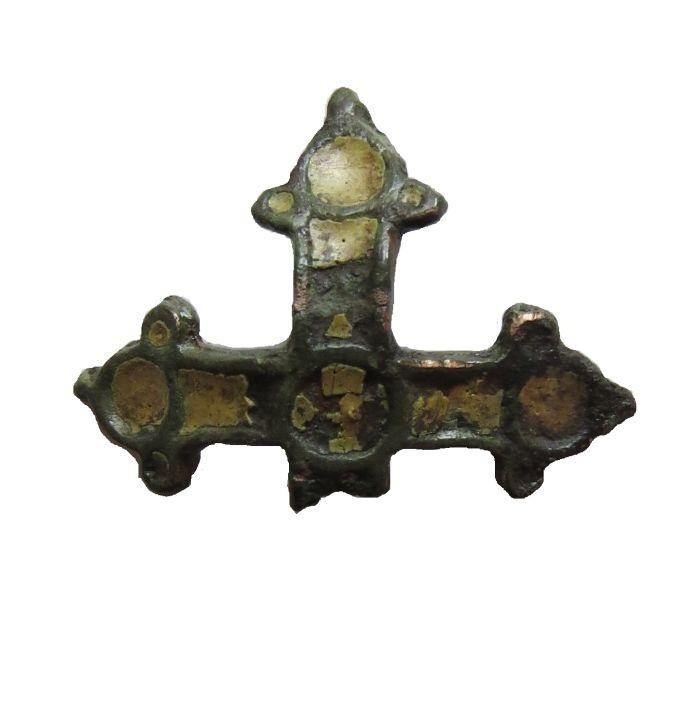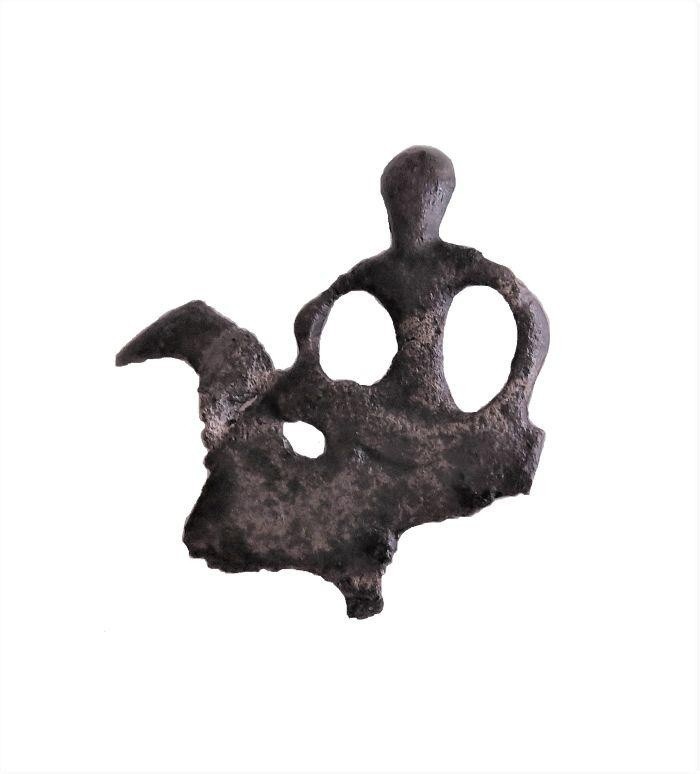Archaeologists discovered a treasure trove at a “previously unknown” archaeological site in south-eastern Poland. Reportedly, the bounty dating back to the 11th and 12th centuries belongs to the time of King Bolesław II, the Bold.
The treasure includes a mysterious lead amulet, a bronze horse, weapons, and ornaments made of silver, lead, and copper alloys. Moreover, it also contains items of everyday use, such as knives and silver coins.
The Village of Daromin
Archaeologists from the Szansa (Chance) Association discovered this in the village of Daromin, around 17 km north of Sandomierz.
Read More: Medieval Sword Found in Poland
Dr. Marek Florek from Marie Curie-Skłodowska University of Lublin spoke to the Polish Press Agency and said, “It’s an extremely intriguing and previously unknown archaeological site which represents a rich collection of early medieval artifacts.”

Dr. Florek also explained how it is plausible that the silver ornaments were imported from early medieval Ruthenia or the Baltic region. Moreover, the elite nature of objects like the lead head of a sceptre/mace suggests that the Daromin settlement had an exceptional character.
The Treasure
“In the early medieval period and later, maces were not just weapons but also symbols of military power.” Dr. Florek added.
Read More: Discovered the Remains of Medieval Soldier Along With Sword and Knives
Dr. Florek believes that the horse is most certainly an ornamental element of spurs, of the so-called Lutomiersk type. The name, Lutomiersk, comes from the location of a cemetery from the turn of the 10th and 11th centuries where such spurs were first found.

In the early Piast state, knightly elites wore spurs to signify status.
On the other hand, Dr. Florek also highlighted a particularly unique object: a lead pendant. It was possibly an amulet. It represented a human figure on the side and a lead charm on the other. Dr. Florek said, “Nothing similar exists among ancient or medieval artifacts found on Polish territory.”
Read More: 800 Year old Complete Chain Mail Vest Discovered
The discovery has led archaeologists and historians to take a fresh look at the relations between the people from the Sandomierz area and various parts of Europe. It also forces us to re-examine the origins of knightly forces in the Sandomierz region, including the influence of foreign visitors on their establishment.
Currently, the artifacts are being studied by the Regional Heritage Protection Office in Kielce. After this, the relics will be transferred to the Castle Museum in Sandomierz.
King Bolesław II
King Boleslaw II the Bold is also known as The Generous. He was Duke of Poland from the date 1058 to 1076. Later, he became the third King of Poland from 1076 to 1079 after gaining influence. He was the eldest son of Duke Casimir I, the Restorer, and Maria Dobroniega of Kiev.
Bolesław II is considered one of the most capable of the Piast rulers. He was a pioneer among Polish monarchs because he produced enough coins to replace foreign coins commonly used during the reigns of previous Piast kings.

Furthermore, he built royal mints in Kraków and Wrocław. He also reformed the coinage, which brought considerable revenue into the royal treasury. All these efforts had an enormous influence on the economic and cultural development of the country.
The ruler married Wyszesława of Kiev, a Kievan Rus’ princess, who by marriage became a Duchess and later the Queen of Poland. According to historical records, Boleslaw II was banished after Stanislaus of Kraków excommunicated the king for his infidelity. On 11 April 1079, the ruler murdered the bishop, which earned him the title of “the Bold.”
Read More: Rare Viking Coin Found In Hungary
Later, he found refuge with King Ladislaus, who owed his crown to the deposed king. The exact cause of his death is unclear. However, various historical accounts suggest multiple possibilities.
One theory claims that Boleslaw may have died due to an illness. However, some accounts suggest that his death may have resulted from a political conspiracy that led to his assassination. In any case, the Polish ruler breathed his last breath at the age of about 40 in 1801 or 1802.






